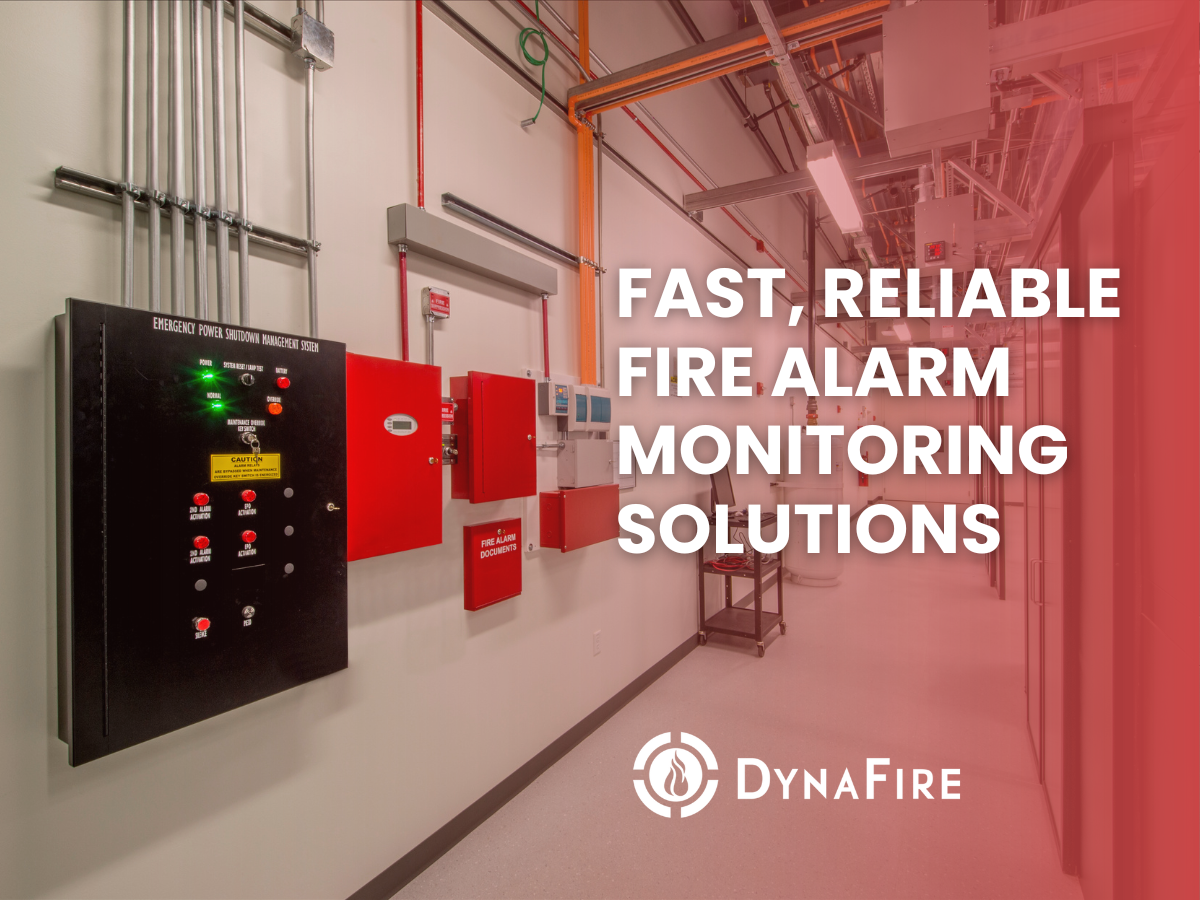Stay connected when it matters most by revisiting your fire alarm system hurricane preparation plan. Learn how wireless monitoring is key to keeping your facility safe.
When hurricane season hits Florida, your primary concern is protecting people and minimizing property damage. But while many focus on boarding windows and securing outdoor items, one critical element is often overlooked: your fire alarm system. Effective fire alarm system hurricane preparation can make the difference between a fast emergency response and costly delays during and after the storm.
This guide will help you assess vulnerabilities, create a readiness plan, and understand how advanced solutions like DynaNet can keep your property connected when traditional systems fail.
Understanding the Vulnerabilities of Your Fire Alarm System
Fire alarm systems are not immune to the challenges of severe weather. From power outages and flooding to communication disruptions, these systems can quickly be compromised during a storm, leaving you unprotected.
The most common threats to fire alarm functionality during a hurricane include:
- Power loss from grid failure or damaged backup systems
- Flooding or wind-driven rain damaging system hardware
- Signal failure due to downed phone lines or cell towers
Being aware of these vulnerabilities is the first step toward proactive planning.
Pre-Storm Checklist for Fire Alarm System Hurricane Preparation
Once you understand where the risks lie, it is time to take preventive action. Whether you manage a single commercial property or multiple facilities, following a hurricane preparation checklist can ensure your fire alarm system is ready before the storm hits.
Here are key tasks to complete ahead of time:
- Inspect all system components: Verify that control panels, smoke detectors, pull stations, and notification devices are free from damage and are functioning correctly.
- Test backup power sources: Ensure all batteries are charged and generators are operational. A system without power is a system that cannot protect you. Side note: did you know that fire sprinklers can still function without power?
- Verify your monitoring connection: Traditional phone lines or cellular connections are prone to failure in extreme weather. Make sure your monitoring method is robust.
- Update emergency contacts and protocols: Have a clear plan for system management and repairs in the aftermath of a storm.
- Schedule preventive maintenance: If your system has not been inspected recently, it is best to schedule a check before hurricane activity begins.
Why DynaNet Monitoring is Essential During Hurricane Season
Not all fire alarm monitoring solutions are designed to perform during a storm. That is where DynaNet is different. DynaFire’s proprietary system provides reliable wireless signal transmission, ensuring that your fire alarms are received and responded to, even when other networks are down.
Unlike systems that rely on telephone lines or cellular towers, DynaNet operates on a redundant mesh network that automatically reroutes signals to the most efficient route. That makes it exceptionally well-suited for hurricane-prone areas like Florida, where infrastructure can be compromised quickly during a storm.
Key benefits of DynaNet monitoring include:
- Fully redundant and self-healing signal paths
- Fast, uninterrupted communication with emergency responders
- Reliable performance during hurricanes and cellular outages
If your current monitoring method is vulnerable to disruption, now is the time to consider switching to DynaNet.
After the Storm: System Rechecks and Recovery
Even if your system made it through the storm without alarms sounding, that does not mean everything is functioning as it should. Post-hurricane damage is not always apparent, and any disruption in service could compromise safety.
A careful inspection can catch water-damaged devices, short circuits, and failed communications before they become liabilities. It also gives you the chance to reset, recalibrate, and get ahead of any repairs needed before the next weather event.
Key post-storm steps include:
- Visually inspecting all components for signs of moisture or physical damage
- Testing alarm signals and verifying your monitoring connection is active
- Confirming that batteries or generators are still operational
- Contacting your fire protection partner for a professional post-event evaluation
Stay Ready with Reliable Fire Alarm System Hurricane Preparation
Hurricane season is not the time to leave your fire alarm system to chance. Being intentional about inspecting, preparing, and upgrading your monitoring solution will keep your people and property safer when the weather turns. DynaFire provides the expertise and technology to help you stay connected, even in the most extreme conditions.
Let us help you prepare for the next storm. Contact us today to schedule a system evaluation or learn more about upgrading to DynaNet.






